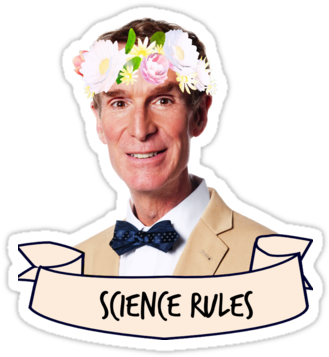The real issue is "Hole" is not desctiptive enough for a clear answer. A straw has one "Through Hole". If you dig a hole in the ground you have one "Blind Hole".
Science Memes
Welcome to c/science_memes @ Mander.xyz!
A place for majestic STEMLORD peacocking, as well as memes about the realities of working in a lab.

Rules
- Don't throw mud. Behave like an intellectual and remember the human.
- Keep it rooted (on topic).
- No spam.
- Infographics welcome, get schooled.
This is a science community. We use the Dawkins definition of meme.
Research Committee
Other Mander Communities
Science and Research
Biology and Life Sciences
- !abiogenesis@mander.xyz
- !animal-behavior@mander.xyz
- !anthropology@mander.xyz
- !arachnology@mander.xyz
- !balconygardening@slrpnk.net
- !biodiversity@mander.xyz
- !biology@mander.xyz
- !biophysics@mander.xyz
- !botany@mander.xyz
- !ecology@mander.xyz
- !entomology@mander.xyz
- !fermentation@mander.xyz
- !herpetology@mander.xyz
- !houseplants@mander.xyz
- !medicine@mander.xyz
- !microscopy@mander.xyz
- !mycology@mander.xyz
- !nudibranchs@mander.xyz
- !nutrition@mander.xyz
- !palaeoecology@mander.xyz
- !palaeontology@mander.xyz
- !photosynthesis@mander.xyz
- !plantid@mander.xyz
- !plants@mander.xyz
- !reptiles and amphibians@mander.xyz
Physical Sciences
- !astronomy@mander.xyz
- !chemistry@mander.xyz
- !earthscience@mander.xyz
- !geography@mander.xyz
- !geospatial@mander.xyz
- !nuclear@mander.xyz
- !physics@mander.xyz
- !quantum-computing@mander.xyz
- !spectroscopy@mander.xyz
Humanities and Social Sciences
Practical and Applied Sciences
- !exercise-and sports-science@mander.xyz
- !gardening@mander.xyz
- !self sufficiency@mander.xyz
- !soilscience@slrpnk.net
- !terrariums@mander.xyz
- !timelapse@mander.xyz
Memes
Miscellaneous
A circle is a plane folded on itself so the answer is technically 0 holes. But first what is a hole?
A goal?
a sphere is a plane folded in on itself, and spheres have no (one-dimensional) holes. but spheres do have a two-dimensional hole, which is basically a way of saying they’re hollow.
but a circle is a line folded in on itself, and lines have one (one-dimensional) hole.
This is one of those "if you cut a hole in a net, it then has less holes than before" type arguments and I'm all here for it.
I think it would still techically be more hole since a larger total area would be hole.
I would be fewer holes, though.
But there’s more hole per hole
What size does a hole need to be to be a hole
In theory, the smallest hole possible would be a ring of atoms combined into a molecule with an empty center
benzene got that nanopussy
That is one way of putting it, a bit crude though....
I imagine you with a monocle and a top hat
This is the kind of content I got to lemmy for.
Twice as big as half a hole, obviously.
The average person is a straw.
This is a strawman argument.
I love you for this!
Not really, they're some sort of tube, but they don't classify as straws
I'm a series of tubes!
You're the Internet?
Yes! You can call me.... The lawnmower man!
(I'm seriously dating myself with that reference)
I remember thinking this was too notch graphics in 1992.
It was uncanny and disturbing back then. It's uncanny, disturbing, and hilarious now.
S¹ × [0, L]
I don't understand why a circle has one/a hole though. I don't even know what a hole is.
What specifically constitutes a hole is somewhat ambiguous, but if you pull on the thread a bit, you'll probably agree that it's a topological quality and that homotopy groups and homology are good candidates. The most grounded way to approach the topic is with simplicial homology.
Make sure you're distinguishing between a circle and a disc.
How about a pair of jeans?
If anyone wants to see an entertaining mathematician talk about this exact topic for 30 minutes, here you go:
One of my friends is a Taurus as well. He's a car.
How many holes does he have?
At least 5. I'm unwilling to do a more thorough count, tho.
Thinking about it, humans have one less hole than I would've guessed, since the tube from our mouth to our anus sort of makes us a complicated straw.
The human body is just a series of tubes.
The internet and I have that in common, I guess.
a torus is not homotopic to a straw though unless you take the straw and glue it at its ends. a straw is homotopic to a circle, a torus is homotopic to product of two circles, Baldur's gate is homotopic to a disk unless we are talking about the game storage medium which used to be a CD which is also homotopic to a circle
Wouldn’t a straw be the product of a circle and a line?
You are talking about a straw of zero wall thickness right? A real straw should be homo-whatever to a torus
Homotopic: Having the same (homo-) topological properties (-topic)
Even if it has thickness still homotopic to a circle. For instance a band with thickness is homotopic to a circle, you can retract along the radius to arrive at a circle that is inside the band. Similarly a plane, or a slab with thickness are all homotopic to a point.
Note that all of these are proved by using collections of transformations from the space to itself (not necessarily from the space to all of itself though, if it maps the space to a subset of it that is fine). So if you want to say something like "but you can also shrink a circle to eventually reach a point but it is not homotopic to a point" that won't work because you are imagining transformation that maps a circle not into itself but to a smaller one.
ps: the actual definition of homotopy equivalence between "objects" is slightly more involved but intuitively it boils down to this when you imagine one space as a subset of the other and try to see if they are homotopy equivalent.
A CD is clearly homotopic to a torus, though...
And the walls of a straw do have thickness...
A straw goes:
Gas - solid - gas - solid - gas
If solid torus yes, if just the regular torus (surface of the solid torus) no. CD is homotopic to a circle and so is a solid torus.
OK, that's my ignorance. I didn't realise toruses were usually hollow.
Thank you for letting me know, you're right and I've learnt something.
The throughput and containment of the object is the criteria for classification here.
Can the object passing through the hole be contained by the medium of the object that is subject to the "hole" classification? If yes, then the object has two holes, one which the passing object passes through to enter the object, and one which is passed through to exit the object.
If the object passing through the object being classified cannot be contained entirely within the classification object medium, then the classification object has one hole.
This kind of classification relies upon the context of the item's usage, and is in fact a "contextually dependent" classification!
Take the straw for example:
When a straw is being used for drinking bubble tea, the straw has two holes when a boba is passing through. The straw has two holes for each ice crystal or clump of crystals that passes through.
Does the straw have two holes for a liquid? Good question! This is also a contextually dependent classification criteria, though this time it is a matter of reference frame! Do you consider a liqiud to be a macro expression of the fluid dynamics of the molecules comprising the medium? Then it is a whole, though I would suggest that the "whole" of the liquid in the container from which it is being drawn to be one "whole" and the liquid which is drawn into the straw during the vacuum action (from the initiation of the "pull" through to its conclusion) to be a new and unique "part" separated from the source volume and comprises a new "whole".
Ok, so NOW if the newly separated volume of liquid being drawn into the straw is less than the total volume of the straw, the straw has two holes (one hole being drawn upon, and one hole into which the newly created liquid volume is being drawn into.
Are you very thirsty? Have you drawn more liquid through the straw than the volume of the straw itself? You could then say the straw only had one hole for the duration of that pull!
On the other hand, if you are defining each molecule within the liquid medium to be its own object, then the straw always has two holes.
I don't personally subscribe to the notion that a straw is a single hole, since, in the abstract, my gut reaction is to define a hole as an absence of something, rather than a property of something else. Tools used to make holes (a shovel, an auger, a 3 hole punch, a gravitational singularity, etc.) all remove a part of the initial object, rather than "adding an absence" (ground media, paper circles, or the physical constants of dimensional spacetime, respectively).
Now that I'm thinking about it though, a straw is constructed by extrusion. The straw media is forced through a mold which defines the initial hole (the initially extruded straw media, which, as side note, is almost certainly trimmed to be cleanly cut to present as clean and uniform tip) and then subsequently, each straw would be severed at standard intervals to make the straw object. While considering this, I feel like it provides even more support for the "two hole argument" as each end of each straw must be independently and intentionally "formed" during the process of manufacturing.
Thoughts?
Tl;dr, I was just looking for memes



